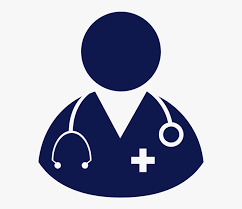AUCTORES
Globalize your Research
Research Article | DOI: https://doi.org/10.31579/2641-0419/107
*Corresponding Author: Aisha Siraj, Heart and Vascular Institute MetroHealth Medical Center, Case Western Reserve University 2500 MetroHealth Drive Cleveland
Citation: Negar Salehi, Saima Karim, Aisha Siraj., (2021) The Importance of Maintaining the Momentum of Telemedicine after COVID-19. J. Clinical Cardiology and Cardiovascular Interventions, 4(2); Doi:10.31579/2641-0419/107
Copyright: © 2021 Aisha Siraj, This is an open-access article distributed under the terms of the Creative Commons Attribution License, which permits unrestricted use, distribution, and reproduction in any medium, provided the original author and source are credited.
Received: 11 November 2020 | Accepted: 11 January 2021 | Published: 27 January 2021
Keywords: telemedicine; telephone encounter; video visit; virtual visit
Telemedicine has been in existence for years with little traction for global mainstream medicine. COVID19 has exposed the importance of providing continued care for patients while minimizing the risk of exposure during pandemics. There has been robust growth in the use of telemedicine since the pandemic began rendering care possible while providing safety to patients and healthcare workers. Various digital applications are available to facilitate telehealth. Even in the absence of a pandemic, telemedicine allows the care of patients who may live in remote areas, or those who have issues with transportation or comorbidities prohibiting ambulation.
This study is based on a questionnaire of providers who have been exposed to telemedicine during COVID19. A survey was shared in social media forums involving groups of physicians, and nurse practitioners who were willing to take the survey.
Telemedicine is one of the best approaches to handling situations like pandemics or disease surges. In these circumstances, a virtual visit is beneficial for social distancing if a laptop, smartphone, or tablet is available, along with an internet or cellular coverage.
Based on this survey conducted for healthcare workers from a variety of specialties, there was a considerable impetus for the continued benefit from telemedicine as an alternative to in-person visits for selected patients.
Ongoing improvements in quality of applications/tools, education, and the cost are essential to maintain the benefits of telemedicine. There is also an ongoing necessity for vast improvements in healthcare policies and reimbursements.
Running Head: Importance of Telemedicine after COVID-19
Despite the existence of telemedicine for years, COVID 19 has accelerated and highlighted the importance of providing continued care for patients while minimizing the risk of exposure during a pandemic. The lack of widespread adoption of telemedicine before COVID-19 is partly because of lack of regulatory framework regarding stepwise initiation, integration into guidelines for practice (especially in conjunction with electronic medical records), funding framework for reimbursement of services rendered, standardized triaging of care provided, education of public en masse, and safe data sharing mechanism within facilities. While COVID-19 has caused an acceleration in the use of telemedicine tools, there have been pandemics globally prior to COVID-19, and there is a likely possibility of other pandemics after COVID-19. [1,2]
There has been robust growth in the use of telemedicine since the pandemic began, and rendering care has become possible while providing safety to patients, patient’s relatives, providers, and other healthcare workers. It has been possible to continue limited in-person appointments due to decreased volume with continued social distancing in patient care areas and waiting rooms. Additionally, telemedicine has reduced the need for personal protective equipment for providers and patients, given the national shortage. The tools for telemedicine include telephone, video-visits, smartphone data-apps, modules linked with an electronic medical record (EMR), and other methods to a smaller degree. Examples of applications that integrate into EMR include video visits on Epic, MDlink, American Well, Polycom RealPresence, CyraCom. Examples of applications that do not integrate into EMR are SnapMD, Doximity, Zoom, FaceTime, Skype, and WhatsApp. The health insurance portability and accountability action(HIPAA) compliant applications among these are Epic, Doximity, MDLink, Polycom RealPresence, etc.
Even in the absence of a pandemic, telemedicine allows the care of patients who are either unable to get transportation, have comorbidities that prohibit ambulation, or those who live in remote areas without access to providers. Unfortunately, educational, and socioeconomic gaps may become more prominent between those who can afford or understand how to use smartphones, tablets, computers with video access versus those who cannot learn how to use or afford these modalities. The learning curve of new technology with regards to telehealth may also be prohibitive based on prior exposure and age as well. However, even a telephone encounter may provide ongoing care for these individuals despite the lack of possibility of some physical exam features that can be detected on video visits. Patient barriers to telemedicine also include the desire to see the provider during periods of illness, inability to communicate with an established provider (versus a new provider without an established relationship), and lack of awareness or access to telemedicine. As far as providers are concerned, the barriers to care include similar problems of patient education, patient preference for an in-person visit, issues with appropriate triaging, access to technology, and appropriately approved data-apps. Challenges with network, reimbursement, decreased productivity, inability to provide physical exam except for certain elements that can be visualized via video visits are extra barriers. [2]
Triaging and workflow should be tailored to the field of medicine for telehealth to be effective. In places, such as urgent care and emergency rooms, “forward triage” allows for effective prospective sorting of urgency before arrival for surge control via screening tools. It also allows for patients with high-risk features of COVID-19 to be isolated immediately upon arrival. [3]
On the other hand, patients who are mildly ill get their care via telephone, video encounters via various smartphones or apps. Triage is imperative regarding the need for in-person visits versus virtual visits that occur in primary care and specialty offices with the use of protocols that are set in place in most practices depending on diagnosis, the severity of symptoms, urgency of care needed, and number or severity of comorbidities. [4]
There are two fronts to telemedicine that are acknowledged: asynchronous (with no concurrent communication between provider and patient); and synchronous (live communication between provider and patient). Asynchronous care can include remote monitoring of devices or chronic conditions, exchange of messages via EMR, results of tests being reported/mailed, medication refills, and management. Synchronous care includes in-person, virtual, or telephone visits with a provider. It is necessary to distinguish between these as the asynchronous telemedicine has been in place and utilized widely by most practices before the pandemic. [5]
Current requirements for telehealth visits include documentation of history, chief complaint, review of systems, past medical history, assessment and plan, level of complexity, mention of any additional workup, total time spent on the encounter (with at least 50% of the time spent in counseling and coordinating care), and examination items (on video visits). Vital signs such a heart rate, blood pressure, respiratory rate, etc. can be added if taken by the patient at home. Adaption of telemedicine within an orthopedic department leads to acceleration to 50% of the average clinical volume within 2 weeks with an indication for in-person visit triage list. Checklists to ensure the appropriate use of electronic medical regards, cameras/microphones, provision of privacy, templates, patient and provider education, appropriate triaging, and adherence to regulations should be made to allow for the feasibility of rapid implementation. [6]
Some factors that are involved in the evolution of telemedicine to make it sustainable, safe and widespread include adequate training of patients/providers/ancillary staff/schedulers/nurses, protocolization triaging, appropriate documentation guides and smart phrases, data protection, confidentiality, and safe data sharing practices. Additionally, reimbursement may be a critical factor in the continuity of the provision of telemedicine as well.[7]
Even though telehealth has revolutionized medicine, the provider's perspective on its need, user-friendliness, limitations, desire for continuity is missing. We surveyed to involve providers in the discussion to see what their perspective of appropriateness, necessity, and suitability of telehealth in their field is.
This study was based on a questionnaire of providers who have been exposed to the concept of telemedicine during COVID-19. A survey was shared in social media forums involving unbiased groups of physicians, nurse practitioners (NPs), and advanced practice nurse practitioners (APRNs) who were willing to take the survey. In the end, 200 providers from different fields of medicine took the survey about telemedicine.
Among those that took the survey, 91.9% were female, 86.5% had an MD degree, and 0.5% physician had DO degree. There were also 1% APRNs and 1% NPs. 86.5% had completed their training and were practicing independently, while 13.5 % were still in training. A myriad of medical specialties was represented in the survey, which are highlighted in (figure 1).
Primary care (including Family Medicine, Internal Medicine, Pediatrics) accounted for 42% of those surveyed. Other larger subsets of specialties represented included Cardiology (10%), Neurology (6.5%), and Psychiatry (5%).
96.5% of those who took the survey were performing telemedicine. Based on this survey, Doximity and Epic videos are the most common modalities used for telemedicine (18.75% and 18.23%, respectively). However, Zoom video (17.19%), telephone encounter (13.02%) wre also common along with Facetime, Google due, and Doximity audio, which were less than 5% each. (Figure-2) 71.79% of the medical staff agreed that follow up patients were the most suitable type of patients for telemedicine.
The second most appropriate category of patients for telemedicine were those with less than 3 comorbidities (51.79%). However, 25% of those surveyed believed that there is no difference between a virtual/telephone/app visit or regular clinic visit. Among those of took the survey, 47.7% thought that doing a physical exam in their specialty is not necessary, while 42.2% emphasized on the importance of physical exams on their visits. The overwhelming majority of health care workers (96.5%) thought that telemedicine was a good mode for patient encounter, and most of them agreed that this needs to be part of the training curriculum (90%).
There was an agreement that ancillary staff such as schedulers, triage nurses, clinic nurses, and medical assistants, etc. would continue to provide an invaluable service with telemedicine (81.63%). 93% agreed that telemedicine should be a viable option after the pandemic as well.
Telemedicine seemed to have variable effects on productivity of providers, 41% of the providers agreed that telemedicine increased their work productivity, and 41% mentioned that their efficiency remains the same. At the same time, about 50% of responders agreed that reimbursement was either good or reasonable, while 26.15% thought that is could be better, and 15.9% believed that it needed significant improvement. (Figure-3) 71% thought that pandemic had not affected their research productivity, while 21.5% agreed that this pandemic decreased their productivity. Interestingly, 60% of survey takers reported that telemedicine helped to have more balance between work and their life.
Telemedicine is a concept that started in the mid-19th century. Communication such as the telegraph and the telephone opened the possibility of remote medical care. In 1924, when the radio was not widely used and television was not yet invented, an avant garde illustration of a family communicating with their physician via a video screen was presented in Radio News Magazine. [8]
The novel version of telemedicine was created in the mid-20th century from aerospace and military communication technology. [9] At that time, telemedicine defined by electrocardiogram monitoring, the transmission of radiology images, supervision of students by advanced practice professionals, and remote education. Data transfer was expensive, and appropriate equipment was lacking leading to hindrance in advancement until the late 1980-1990s when these barriers were simplified. [9]
So far, telemedicine has been successfully used in several disasters liked responses to the Texas hurricane and the Gulf Coast disasters in the fall of 2017. These trials confirmed the availability of access to physicians, but some challenges needed to be overcome. Most of the services, including the prescription of routine medications, evaluation of insect bites, wound infections, and mental health were managed successfully. [10]
Telemedicine is one of the best approaches to handling situations like pandemics or disease surges. In these circumstances, a virtual visit is beneficial for social distancing if a laptop, smartphone, or tablet is available, along with an internet or cellular coverage. Telemedicine utility during COVID-19 is the most recent urgency that has unveiled that virtual visits could be a reasonable replacement for at least 70-80% of follow up and some of the initial visits.
In this questionnaire, we asked healthcare workers from various specialties with different levels of education about telemedicine. The majority agreed that this could be an excellent tool that should continue after the pandemic with a need to include telemedicine in medical school, graduate, and post-graduate education to instruct regarding different aspects of patient selection, obtainment of appropriate information, the possibility of a physical exam, variety of remote testing/parameters that are feasible, need for escalation of care etc. One of the limitations of this survey was the absence of data and information from the patients' point of view. Another limitation was that this was a survey that was taken mainly by female healthcare providers. However, the questions asked were not gender-specific, and results were likely not affected by the low proportion of male participants, except for questions regarding work-life balance which innately affects the genders differently in the current healthcare structure.
The survey was instrumental in understanding that healthcare providers appreciate telemedicine and want it as a continued tool. Telemedicine can decrease the cost of healthcare, increase the level of patients’ satisfaction, provide a better life-work balance for healthcare providers, increase access to care, and provide safe and efficient telephone or virtual visits during pandemics or other dire times. The risks of telemedicine include potential patient data safety, such as HIPPA compliance with tools used for telemedicine, creation of appropriate algorithms for proper patient selection, understanding of remote tools to supplement care (such as vitals done remote of smart devices), and knowledge of appropriateness of escalation of care if needed. The importance of advantages and disadvantages of telemedicine and traditional care should be understood by healthcare workers and patients to allow for safe delivery of care.
While everybody is mindful of the requirements for conventional visits, awareness of the tools and setting for telemedicine should also be widespread. HIPPA compliant devices and space that healthcare providers can use for telemedicine are necessary to have an uninterrupted private visit with patients with the provision of ancillary support. Additionally, access and knowledge of tools such as laptops, smartphones, or tablets, HIPPA compliant web-based devices, or applications are necessary for the patient as well.
Based on this survey conducted for healthcare workers from a variety of specialties, there was a considerable impetus for the continued benefit from telemedicine as an alternative to in-person visits for selected patients.
Ongoing improvements in quality of telemedicine forums, supplemental tools, education, and the cost are essential to maintain the benefits of telemedicine. There is a necessity for vast improvements in healthcare policies and reimbursements that will allow for the use of telemedicine to benefit healthcare providers and patients in the future.
This article highlights the healthcare provider's perspective on the benefits of telemedicine, along with some of the challenges. COVID-19 has provided us with the opportunity to expand access and modes of care that we can provide our patients. We hope that the desires of healthcare workers during COVID19 serve as catalyst to further education and improvement in healthcare policies and reimbursement that will help telemedicine endure and expand beyond the pandemic.
Highlights:
Conflict of Interest Disclosures: None
Clearly Auctoresonline and particularly Psychology and Mental Health Care Journal is dedicated to improving health care services for individuals and populations. The editorial boards' ability to efficiently recognize and share the global importance of health literacy with a variety of stakeholders. Auctoresonline publishing platform can be used to facilitate of optimal client-based services and should be added to health care professionals' repertoire of evidence-based health care resources.

Journal of Clinical Cardiology and Cardiovascular Intervention The submission and review process was adequate. However I think that the publication total value should have been enlightened in early fases. Thank you for all.

Journal of Women Health Care and Issues By the present mail, I want to say thank to you and tour colleagues for facilitating my published article. Specially thank you for the peer review process, support from the editorial office. I appreciate positively the quality of your journal.
Journal of Clinical Research and Reports I would be very delighted to submit my testimonial regarding the reviewer board and the editorial office. The reviewer board were accurate and helpful regarding any modifications for my manuscript. And the editorial office were very helpful and supportive in contacting and monitoring with any update and offering help. It was my pleasure to contribute with your promising Journal and I am looking forward for more collaboration.

We would like to thank the Journal of Thoracic Disease and Cardiothoracic Surgery because of the services they provided us for our articles. The peer-review process was done in a very excellent time manner, and the opinions of the reviewers helped us to improve our manuscript further. The editorial office had an outstanding correspondence with us and guided us in many ways. During a hard time of the pandemic that is affecting every one of us tremendously, the editorial office helped us make everything easier for publishing scientific work. Hope for a more scientific relationship with your Journal.

The peer-review process which consisted high quality queries on the paper. I did answer six reviewers’ questions and comments before the paper was accepted. The support from the editorial office is excellent.

Journal of Neuroscience and Neurological Surgery. I had the experience of publishing a research article recently. The whole process was simple from submission to publication. The reviewers made specific and valuable recommendations and corrections that improved the quality of my publication. I strongly recommend this Journal.

Dr. Katarzyna Byczkowska My testimonial covering: "The peer review process is quick and effective. The support from the editorial office is very professional and friendly. Quality of the Clinical Cardiology and Cardiovascular Interventions is scientific and publishes ground-breaking research on cardiology that is useful for other professionals in the field.

Thank you most sincerely, with regard to the support you have given in relation to the reviewing process and the processing of my article entitled "Large Cell Neuroendocrine Carcinoma of The Prostate Gland: A Review and Update" for publication in your esteemed Journal, Journal of Cancer Research and Cellular Therapeutics". The editorial team has been very supportive.

Testimony of Journal of Clinical Otorhinolaryngology: work with your Reviews has been a educational and constructive experience. The editorial office were very helpful and supportive. It was a pleasure to contribute to your Journal.

Dr. Bernard Terkimbi Utoo, I am happy to publish my scientific work in Journal of Women Health Care and Issues (JWHCI). The manuscript submission was seamless and peer review process was top notch. I was amazed that 4 reviewers worked on the manuscript which made it a highly technical, standard and excellent quality paper. I appreciate the format and consideration for the APC as well as the speed of publication. It is my pleasure to continue with this scientific relationship with the esteem JWHCI.

This is an acknowledgment for peer reviewers, editorial board of Journal of Clinical Research and Reports. They show a lot of consideration for us as publishers for our research article “Evaluation of the different factors associated with side effects of COVID-19 vaccination on medical students, Mutah university, Al-Karak, Jordan”, in a very professional and easy way. This journal is one of outstanding medical journal.
Dear Hao Jiang, to Journal of Nutrition and Food Processing We greatly appreciate the efficient, professional and rapid processing of our paper by your team. If there is anything else we should do, please do not hesitate to let us know. On behalf of my co-authors, we would like to express our great appreciation to editor and reviewers.

As an author who has recently published in the journal "Brain and Neurological Disorders". I am delighted to provide a testimonial on the peer review process, editorial office support, and the overall quality of the journal. The peer review process at Brain and Neurological Disorders is rigorous and meticulous, ensuring that only high-quality, evidence-based research is published. The reviewers are experts in their fields, and their comments and suggestions were constructive and helped improve the quality of my manuscript. The review process was timely and efficient, with clear communication from the editorial office at each stage. The support from the editorial office was exceptional throughout the entire process. The editorial staff was responsive, professional, and always willing to help. They provided valuable guidance on formatting, structure, and ethical considerations, making the submission process seamless. Moreover, they kept me informed about the status of my manuscript and provided timely updates, which made the process less stressful. The journal Brain and Neurological Disorders is of the highest quality, with a strong focus on publishing cutting-edge research in the field of neurology. The articles published in this journal are well-researched, rigorously peer-reviewed, and written by experts in the field. The journal maintains high standards, ensuring that readers are provided with the most up-to-date and reliable information on brain and neurological disorders. In conclusion, I had a wonderful experience publishing in Brain and Neurological Disorders. The peer review process was thorough, the editorial office provided exceptional support, and the journal's quality is second to none. I would highly recommend this journal to any researcher working in the field of neurology and brain disorders.

Dear Agrippa Hilda, Journal of Neuroscience and Neurological Surgery, Editorial Coordinator, I trust this message finds you well. I want to extend my appreciation for considering my article for publication in your esteemed journal. I am pleased to provide a testimonial regarding the peer review process and the support received from your editorial office. The peer review process for my paper was carried out in a highly professional and thorough manner. The feedback and comments provided by the authors were constructive and very useful in improving the quality of the manuscript. This rigorous assessment process undoubtedly contributes to the high standards maintained by your journal.

International Journal of Clinical Case Reports and Reviews. I strongly recommend to consider submitting your work to this high-quality journal. The support and availability of the Editorial staff is outstanding and the review process was both efficient and rigorous.

Thank you very much for publishing my Research Article titled “Comparing Treatment Outcome Of Allergic Rhinitis Patients After Using Fluticasone Nasal Spray And Nasal Douching" in the Journal of Clinical Otorhinolaryngology. As Medical Professionals we are immensely benefited from study of various informative Articles and Papers published in this high quality Journal. I look forward to enriching my knowledge by regular study of the Journal and contribute my future work in the field of ENT through the Journal for use by the medical fraternity. The support from the Editorial office was excellent and very prompt. I also welcome the comments received from the readers of my Research Article.

Dear Erica Kelsey, Editorial Coordinator of Cancer Research and Cellular Therapeutics Our team is very satisfied with the processing of our paper by your journal. That was fast, efficient, rigorous, but without unnecessary complications. We appreciated the very short time between the submission of the paper and its publication on line on your site.

I am very glad to say that the peer review process is very successful and fast and support from the Editorial Office. Therefore, I would like to continue our scientific relationship for a long time. And I especially thank you for your kindly attention towards my article. Have a good day!

"We recently published an article entitled “Influence of beta-Cyclodextrins upon the Degradation of Carbofuran Derivatives under Alkaline Conditions" in the Journal of “Pesticides and Biofertilizers” to show that the cyclodextrins protect the carbamates increasing their half-life time in the presence of basic conditions This will be very helpful to understand carbofuran behaviour in the analytical, agro-environmental and food areas. We greatly appreciated the interaction with the editor and the editorial team; we were particularly well accompanied during the course of the revision process, since all various steps towards publication were short and without delay".

I would like to express my gratitude towards you process of article review and submission. I found this to be very fair and expedient. Your follow up has been excellent. I have many publications in national and international journal and your process has been one of the best so far. Keep up the great work.

We are grateful for this opportunity to provide a glowing recommendation to the Journal of Psychiatry and Psychotherapy. We found that the editorial team were very supportive, helpful, kept us abreast of timelines and over all very professional in nature. The peer review process was rigorous, efficient and constructive that really enhanced our article submission. The experience with this journal remains one of our best ever and we look forward to providing future submissions in the near future.

I am very pleased to serve as EBM of the journal, I hope many years of my experience in stem cells can help the journal from one way or another. As we know, stem cells hold great potential for regenerative medicine, which are mostly used to promote the repair response of diseased, dysfunctional or injured tissue using stem cells or their derivatives. I think Stem Cell Research and Therapeutics International is a great platform to publish and share the understanding towards the biology and translational or clinical application of stem cells.

I would like to give my testimony in the support I have got by the peer review process and to support the editorial office where they were of asset to support young author like me to be encouraged to publish their work in your respected journal and globalize and share knowledge across the globe. I really give my great gratitude to your journal and the peer review including the editorial office.

I am delighted to publish our manuscript entitled "A Perspective on Cocaine Induced Stroke - Its Mechanisms and Management" in the Journal of Neuroscience and Neurological Surgery. The peer review process, support from the editorial office, and quality of the journal are excellent. The manuscripts published are of high quality and of excellent scientific value. I recommend this journal very much to colleagues.

Dr.Tania Muñoz, My experience as researcher and author of a review article in The Journal Clinical Cardiology and Interventions has been very enriching and stimulating. The editorial team is excellent, performs its work with absolute responsibility and delivery. They are proactive, dynamic and receptive to all proposals. Supporting at all times the vast universe of authors who choose them as an option for publication. The team of review specialists, members of the editorial board, are brilliant professionals, with remarkable performance in medical research and scientific methodology. Together they form a frontline team that consolidates the JCCI as a magnificent option for the publication and review of high-level medical articles and broad collective interest. I am honored to be able to share my review article and open to receive all your comments.

“The peer review process of JPMHC is quick and effective. Authors are benefited by good and professional reviewers with huge experience in the field of psychology and mental health. The support from the editorial office is very professional. People to contact to are friendly and happy to help and assist any query authors might have. Quality of the Journal is scientific and publishes ground-breaking research on mental health that is useful for other professionals in the field”.

Dear editorial department: On behalf of our team, I hereby certify the reliability and superiority of the International Journal of Clinical Case Reports and Reviews in the peer review process, editorial support, and journal quality. Firstly, the peer review process of the International Journal of Clinical Case Reports and Reviews is rigorous, fair, transparent, fast, and of high quality. The editorial department invites experts from relevant fields as anonymous reviewers to review all submitted manuscripts. These experts have rich academic backgrounds and experience, and can accurately evaluate the academic quality, originality, and suitability of manuscripts. The editorial department is committed to ensuring the rigor of the peer review process, while also making every effort to ensure a fast review cycle to meet the needs of authors and the academic community. Secondly, the editorial team of the International Journal of Clinical Case Reports and Reviews is composed of a group of senior scholars and professionals with rich experience and professional knowledge in related fields. The editorial department is committed to assisting authors in improving their manuscripts, ensuring their academic accuracy, clarity, and completeness. Editors actively collaborate with authors, providing useful suggestions and feedback to promote the improvement and development of the manuscript. We believe that the support of the editorial department is one of the key factors in ensuring the quality of the journal. Finally, the International Journal of Clinical Case Reports and Reviews is renowned for its high- quality articles and strict academic standards. The editorial department is committed to publishing innovative and academically valuable research results to promote the development and progress of related fields. The International Journal of Clinical Case Reports and Reviews is reasonably priced and ensures excellent service and quality ratio, allowing authors to obtain high-level academic publishing opportunities in an affordable manner. I hereby solemnly declare that the International Journal of Clinical Case Reports and Reviews has a high level of credibility and superiority in terms of peer review process, editorial support, reasonable fees, and journal quality. Sincerely, Rui Tao.

Clinical Cardiology and Cardiovascular Interventions I testity the covering of the peer review process, support from the editorial office, and quality of the journal.

Clinical Cardiology and Cardiovascular Interventions, we deeply appreciate the interest shown in our work and its publication. It has been a true pleasure to collaborate with you. The peer review process, as well as the support provided by the editorial office, have been exceptional, and the quality of the journal is very high, which was a determining factor in our decision to publish with you.
The peer reviewers process is quick and effective, the supports from editorial office is excellent, the quality of journal is high. I would like to collabroate with Internatioanl journal of Clinical Case Reports and Reviews journal clinically in the future time.

Clinical Cardiology and Cardiovascular Interventions, I would like to express my sincerest gratitude for the trust placed in our team for the publication in your journal. It has been a true pleasure to collaborate with you on this project. I am pleased to inform you that both the peer review process and the attention from the editorial coordination have been excellent. Your team has worked with dedication and professionalism to ensure that your publication meets the highest standards of quality. We are confident that this collaboration will result in mutual success, and we are eager to see the fruits of this shared effort.

Dear Dr. Jessica Magne, Editorial Coordinator 0f Clinical Cardiology and Cardiovascular Interventions, I hope this message finds you well. I want to express my utmost gratitude for your excellent work and for the dedication and speed in the publication process of my article titled "Navigating Innovation: Qualitative Insights on Using Technology for Health Education in Acute Coronary Syndrome Patients." I am very satisfied with the peer review process, the support from the editorial office, and the quality of the journal. I hope we can maintain our scientific relationship in the long term.
Dear Monica Gissare, - Editorial Coordinator of Nutrition and Food Processing. ¨My testimony with you is truly professional, with a positive response regarding the follow-up of the article and its review, you took into account my qualities and the importance of the topic¨.

Dear Dr. Jessica Magne, Editorial Coordinator 0f Clinical Cardiology and Cardiovascular Interventions, The review process for the article “The Handling of Anti-aggregants and Anticoagulants in the Oncologic Heart Patient Submitted to Surgery” was extremely rigorous and detailed. From the initial submission to the final acceptance, the editorial team at the “Journal of Clinical Cardiology and Cardiovascular Interventions” demonstrated a high level of professionalism and dedication. The reviewers provided constructive and detailed feedback, which was essential for improving the quality of our work. Communication was always clear and efficient, ensuring that all our questions were promptly addressed. The quality of the “Journal of Clinical Cardiology and Cardiovascular Interventions” is undeniable. It is a peer-reviewed, open-access publication dedicated exclusively to disseminating high-quality research in the field of clinical cardiology and cardiovascular interventions. The journal's impact factor is currently under evaluation, and it is indexed in reputable databases, which further reinforces its credibility and relevance in the scientific field. I highly recommend this journal to researchers looking for a reputable platform to publish their studies.

Dear Editorial Coordinator of the Journal of Nutrition and Food Processing! "I would like to thank the Journal of Nutrition and Food Processing for including and publishing my article. The peer review process was very quick, movement and precise. The Editorial Board has done an extremely conscientious job with much help, valuable comments and advices. I find the journal very valuable from a professional point of view, thank you very much for allowing me to be part of it and I would like to participate in the future!”

Dealing with The Journal of Neurology and Neurological Surgery was very smooth and comprehensive. The office staff took time to address my needs and the response from editors and the office was prompt and fair. I certainly hope to publish with this journal again.Their professionalism is apparent and more than satisfactory. Susan Weiner

My Testimonial Covering as fellowing: Lin-Show Chin. The peer reviewers process is quick and effective, the supports from editorial office is excellent, the quality of journal is high. I would like to collabroate with Internatioanl journal of Clinical Case Reports and Reviews.

My experience publishing in Psychology and Mental Health Care was exceptional. The peer review process was rigorous and constructive, with reviewers providing valuable insights that helped enhance the quality of our work. The editorial team was highly supportive and responsive, making the submission process smooth and efficient. The journal's commitment to high standards and academic rigor makes it a respected platform for quality research. I am grateful for the opportunity to publish in such a reputable journal.
My experience publishing in International Journal of Clinical Case Reports and Reviews was exceptional. I Come forth to Provide a Testimonial Covering the Peer Review Process and the editorial office for the Professional and Impartial Evaluation of the Manuscript.

I would like to offer my testimony in the support. I have received through the peer review process and support the editorial office where they are to support young authors like me, encourage them to publish their work in your esteemed journals, and globalize and share knowledge globally. I really appreciate your journal, peer review, and editorial office.
Dear Agrippa Hilda- Editorial Coordinator of Journal of Neuroscience and Neurological Surgery, "The peer review process was very quick and of high quality, which can also be seen in the articles in the journal. The collaboration with the editorial office was very good."

I would like to express my sincere gratitude for the support and efficiency provided by the editorial office throughout the publication process of my article, “Delayed Vulvar Metastases from Rectal Carcinoma: A Case Report.” I greatly appreciate the assistance and guidance I received from your team, which made the entire process smooth and efficient. The peer review process was thorough and constructive, contributing to the overall quality of the final article. I am very grateful for the high level of professionalism and commitment shown by the editorial staff, and I look forward to maintaining a long-term collaboration with the International Journal of Clinical Case Reports and Reviews.
To Dear Erin Aust, I would like to express my heartfelt appreciation for the opportunity to have my work published in this esteemed journal. The entire publication process was smooth and well-organized, and I am extremely satisfied with the final result. The Editorial Team demonstrated the utmost professionalism, providing prompt and insightful feedback throughout the review process. Their clear communication and constructive suggestions were invaluable in enhancing my manuscript, and their meticulous attention to detail and dedication to quality are truly commendable. Additionally, the support from the Editorial Office was exceptional. From the initial submission to the final publication, I was guided through every step of the process with great care and professionalism. The team's responsiveness and assistance made the entire experience both easy and stress-free. I am also deeply impressed by the quality and reputation of the journal. It is an honor to have my research featured in such a respected publication, and I am confident that it will make a meaningful contribution to the field.

"I am grateful for the opportunity of contributing to [International Journal of Clinical Case Reports and Reviews] and for the rigorous review process that enhances the quality of research published in your esteemed journal. I sincerely appreciate the time and effort of your team who have dedicatedly helped me in improvising changes and modifying my manuscript. The insightful comments and constructive feedback provided have been invaluable in refining and strengthening my work".

I thank the ‘Journal of Clinical Research and Reports’ for accepting this article for publication. This is a rigorously peer reviewed journal which is on all major global scientific data bases. I note the review process was prompt, thorough and professionally critical. It gave us an insight into a number of important scientific/statistical issues. The review prompted us to review the relevant literature again and look at the limitations of the study. The peer reviewers were open, clear in the instructions and the editorial team was very prompt in their communication. This journal certainly publishes quality research articles. I would recommend the journal for any future publications.

Dear Jessica Magne, with gratitude for the joint work. Fast process of receiving and processing the submitted scientific materials in “Clinical Cardiology and Cardiovascular Interventions”. High level of competence of the editors with clear and correct recommendations and ideas for enriching the article.

We found the peer review process quick and positive in its input. The support from the editorial officer has been very agile, always with the intention of improving the article and taking into account our subsequent corrections.

My article, titled 'No Way Out of the Smartphone Epidemic Without Considering the Insights of Brain Research,' has been republished in the International Journal of Clinical Case Reports and Reviews. The review process was seamless and professional, with the editors being both friendly and supportive. I am deeply grateful for their efforts.
To Dear Erin Aust – Editorial Coordinator of Journal of General Medicine and Clinical Practice! I declare that I am absolutely satisfied with your work carried out with great competence in following the manuscript during the various stages from its receipt, during the revision process to the final acceptance for publication. Thank Prof. Elvira Farina

Dear Jessica, and the super professional team of the ‘Clinical Cardiology and Cardiovascular Interventions’ I am sincerely grateful to the coordinated work of the journal team for the no problem with the submission of my manuscript: “Cardiometabolic Disorders in A Pregnant Woman with Severe Preeclampsia on the Background of Morbid Obesity (Case Report).” The review process by 5 experts was fast, and the comments were professional, which made it more specific and academic, and the process of publication and presentation of the article was excellent. I recommend that my colleagues publish articles in this journal, and I am interested in further scientific cooperation. Sincerely and best wishes, Dr. Oleg Golyanovskiy.

Dear Ashley Rosa, Editorial Coordinator of the journal - Psychology and Mental Health Care. " The process of obtaining publication of my article in the Psychology and Mental Health Journal was positive in all areas. The peer review process resulted in a number of valuable comments, the editorial process was collaborative and timely, and the quality of this journal has been quickly noticed, resulting in alternative journals contacting me to publish with them." Warm regards, Susan Anne Smith, PhD. Australian Breastfeeding Association.

Dear Jessica Magne, Editorial Coordinator, Clinical Cardiology and Cardiovascular Interventions, Auctores Publishing LLC. I appreciate the journal (JCCI) editorial office support, the entire team leads were always ready to help, not only on technical front but also on thorough process. Also, I should thank dear reviewers’ attention to detail and creative approach to teach me and bring new insights by their comments. Surely, more discussions and introduction of other hemodynamic devices would provide better prevention and management of shock states. Your efforts and dedication in presenting educational materials in this journal are commendable. Best wishes from, Farahnaz Fallahian.
Dear Maria Emerson, Editorial Coordinator, International Journal of Clinical Case Reports and Reviews, Auctores Publishing LLC. I am delighted to have published our manuscript, "Acute Colonic Pseudo-Obstruction (ACPO): A rare but serious complication following caesarean section." I want to thank the editorial team, especially Maria Emerson, for their prompt review of the manuscript, quick responses to queries, and overall support. Yours sincerely Dr. Victor Olagundoye.

Dear Ashley Rosa, Editorial Coordinator, International Journal of Clinical Case Reports and Reviews. Many thanks for publishing this manuscript after I lost confidence the editors were most helpful, more than other journals Best wishes from, Susan Anne Smith, PhD. Australian Breastfeeding Association.

Dear Agrippa Hilda, Editorial Coordinator, Journal of Neuroscience and Neurological Surgery. The entire process including article submission, review, revision, and publication was extremely easy. The journal editor was prompt and helpful, and the reviewers contributed to the quality of the paper. Thank you so much! Eric Nussbaum, MD
Dr Hala Al Shaikh This is to acknowledge that the peer review process for the article ’ A Novel Gnrh1 Gene Mutation in Four Omani Male Siblings, Presentation and Management ’ sent to the International Journal of Clinical Case Reports and Reviews was quick and smooth. The editorial office was prompt with easy communication.

Dear Erin Aust, Editorial Coordinator, Journal of General Medicine and Clinical Practice. We are pleased to share our experience with the “Journal of General Medicine and Clinical Practice”, following the successful publication of our article. The peer review process was thorough and constructive, helping to improve the clarity and quality of the manuscript. We are especially thankful to Ms. Erin Aust, the Editorial Coordinator, for her prompt communication and continuous support throughout the process. Her professionalism ensured a smooth and efficient publication experience. The journal upholds high editorial standards, and we highly recommend it to fellow researchers seeking a credible platform for their work. Best wishes By, Dr. Rakhi Mishra.

Dear Jessica Magne, Editorial Coordinator, Clinical Cardiology and Cardiovascular Interventions, Auctores Publishing LLC. The peer review process of the journal of Clinical Cardiology and Cardiovascular Interventions was excellent and fast, as was the support of the editorial office and the quality of the journal. Kind regards Walter F. Riesen Prof. Dr. Dr. h.c. Walter F. Riesen.

Dear Ashley Rosa, Editorial Coordinator, International Journal of Clinical Case Reports and Reviews, Auctores Publishing LLC. Thank you for publishing our article, Exploring Clozapine's Efficacy in Managing Aggression: A Multiple Single-Case Study in Forensic Psychiatry in the international journal of clinical case reports and reviews. We found the peer review process very professional and efficient. The comments were constructive, and the whole process was efficient. On behalf of the co-authors, I would like to thank you for publishing this article. With regards, Dr. Jelle R. Lettinga.

Dear Clarissa Eric, Editorial Coordinator, Journal of Clinical Case Reports and Studies, I would like to express my deep admiration for the exceptional professionalism demonstrated by your journal. I am thoroughly impressed by the speed of the editorial process, the substantive and insightful reviews, and the meticulous preparation of the manuscript for publication. Additionally, I greatly appreciate the courteous and immediate responses from your editorial office to all my inquiries. Best Regards, Dariusz Ziora

Dear Chrystine Mejia, Editorial Coordinator, Journal of Neurodegeneration and Neurorehabilitation, Auctores Publishing LLC, We would like to thank the editorial team for the smooth and high-quality communication leading up to the publication of our article in the Journal of Neurodegeneration and Neurorehabilitation. The reviewers have extensive knowledge in the field, and their relevant questions helped to add value to our publication. Kind regards, Dr. Ravi Shrivastava.

Dear Clarissa Eric, Editorial Coordinator, Journal of Clinical Case Reports and Studies, Auctores Publishing LLC, USA Office: +1-(302)-520-2644. I would like to express my sincere appreciation for the efficient and professional handling of my case report by the ‘Journal of Clinical Case Reports and Studies’. The peer review process was not only fast but also highly constructive—the reviewers’ comments were clear, relevant, and greatly helped me improve the quality and clarity of my manuscript. I also received excellent support from the editorial office throughout the process. Communication was smooth and timely, and I felt well guided at every stage, from submission to publication. The overall quality and rigor of the journal are truly commendable. I am pleased to have published my work with Journal of Clinical Case Reports and Studies, and I look forward to future opportunities for collaboration. Sincerely, Aline Tollet, UCLouvain.

Dear Ms. Mayra Duenas, Editorial Coordinator, International Journal of Clinical Case Reports and Reviews. “The International Journal of Clinical Case Reports and Reviews represented the “ideal house” to share with the research community a first experience with the use of the Simeox device for speech rehabilitation. High scientific reputation and attractive website communication were first determinants for the selection of this Journal, and the following submission process exceeded expectations: fast but highly professional peer review, great support by the editorial office, elegant graphic layout. Exactly what a dynamic research team - also composed by allied professionals - needs!" From, Chiara Beccaluva, PT - Italy.

Dear Maria Emerson, Editorial Coordinator, we have deeply appreciated the professionalism demonstrated by the International Journal of Clinical Case Reports and Reviews. The reviewers have extensive knowledge of our field and have been very efficient and fast in supporting the process. I am really looking forward to further collaboration. Thanks. Best regards, Dr. Claudio Ligresti